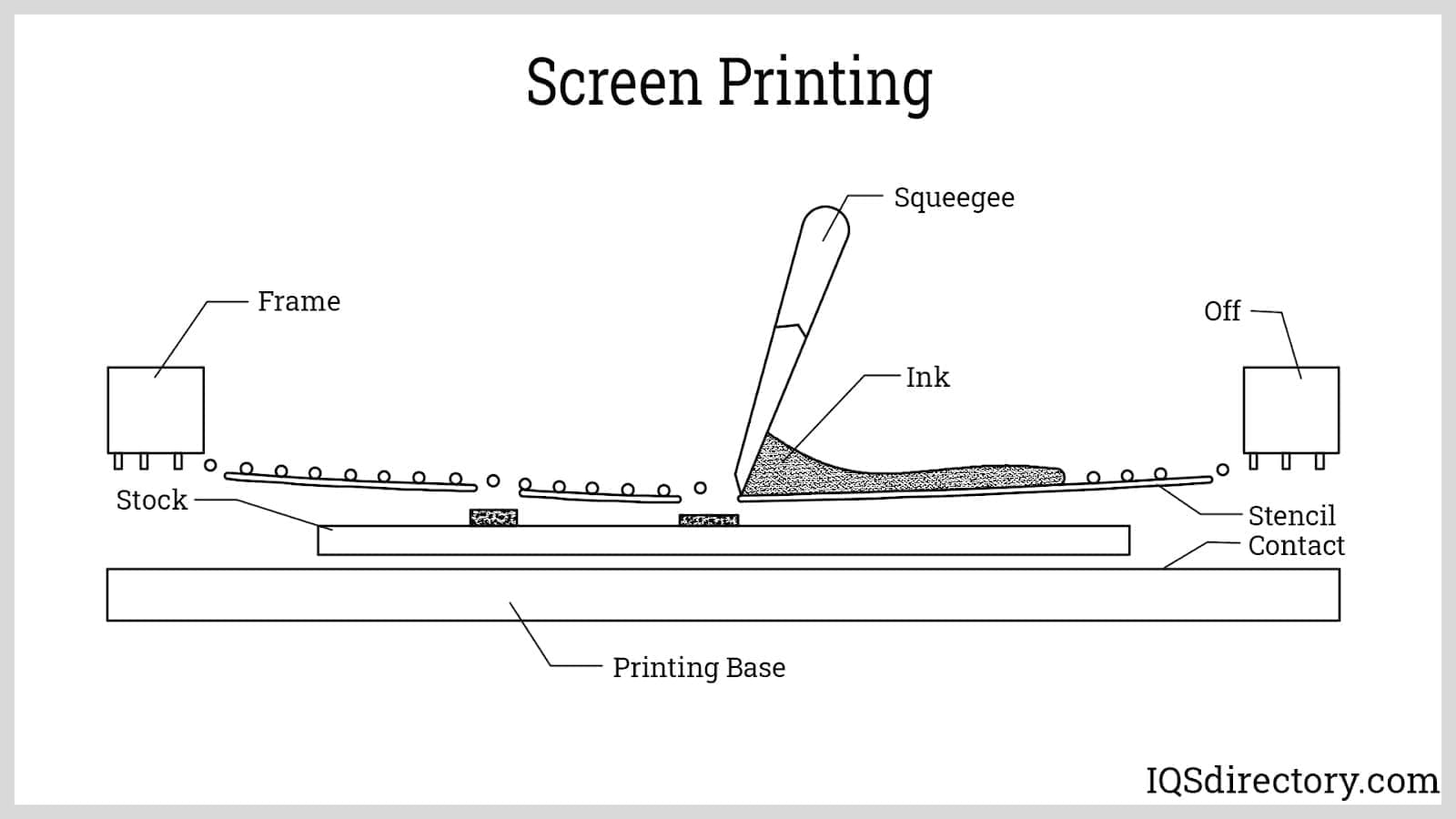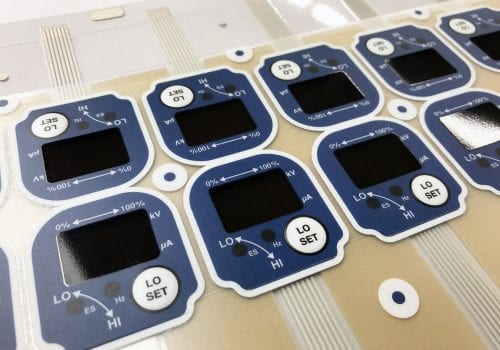The Production Refine Behind Membrane Layer Switch: What You Required to Know
The manufacturing process behind membrane layer changes combines mindful style, product choice, and quality assurance. It starts with recognizing the details of membrane button design and proceeds through different phases, including material selections and printing techniques. Each stage plays a vital role in making sure functionality and toughness. Nevertheless, the complexities of layer building and the strenuous testing requirements might reveal understandings that are not immediately evident. What exists beyond these foundational aspects?
Recognizing Membrane Layer Switch Over Design
Membrane switches may show up simple at very first glimpse, their layout entails detailed considerations that assure capability and toughness. The design procedure begins with an extensive understanding of user requirements, including the user interface's desired application and environmental factors. Comfort designs is a crucial element, as the design needs to promote ease of usage while guaranteeing that tactile responses meets customer expectations.Moreover, the layering of components, such as visuals overlays, adhesive layers, and conductive traces, need to be precisely crafted. membrane switch. This split configuration not just influences the button's responsiveness however likewise influences its durability. Attention is given to the securing techniques utilized to safeguard versus wetness and dust, which might endanger efficiency. Additionally, layout factors to consider prolong to aesthetic appeals, where color design and visual quality improve individual experience. Ultimately, the design of membrane switches over equilibriums functionality, user experience, and resilience, ensuring that they fulfill the demands of numerous applications successfully
Materials Made Use Of in Membrane Layer Change Production
When choosing materials for membrane layer button manufacturing, it is vital to ponder both performance and resilience. The key materials consist of polyester and polycarbonate films, which supply flexibility and toughness. These films are frequently coated with sticky to assure correct bonding to substratums. Conductive inks, usually made up of silver or carbon, are vital for creating electric links within the switch, enabling for dependable operation.Additionally, a safety layer, such as a tough coat, is regularly put on improve scrape resistance and longevity. The option of backing product, such as acrylic or foam, can considerably affect the button's tactile feeling and total user experience. Different ecological variables, including temperature and humidity, must lead product option to guarantee peak performance in particular applications. Inevitably, the appropriate combination of materials adds to the membrane switch's functionality and life expectancy, making notified selections crucial for manufacturers.
The Printing Process: Creating Graphics and Text
The printing process in membrane button production plays a significant role in producing premium graphics and text. Different graphic design techniques are employed to guarantee visual appeal and capability, while mindful ink option approaches are crucial for longevity and efficiency. Recognizing these components is fundamental for attaining ideal lead to membrane switch design.
Graphic Design Techniques
Graphic design strategies play a vital function in the printing procedure of membrane buttons, as they define how graphics and message will inevitably show up on the end product. Efficient graphic style involves the critical usage of formats, font styles, and shades to enhance readability and aesthetic charm. Developers usually utilize vector graphics for scalability, making certain that pictures continue to be sharp at various dimensions. Additionally, interest to contrast and positioning is vital, as it influences customer interaction and visual top quality. The incorporation of branding components, such as logos, need to be taken care of with like keep brand name integrity. Generally, thoughtful visuals design methods contribute considerably to the capability and attractiveness of membrane layer buttons, impacting individual experience and product efficiency.
Ink Choice Methods
Picking the appropriate ink is crucial for achieving the desired visual high quality and resilience in membrane switch manufacturing. Various ink types are used, including solvent-based, water-based, and UV-curable inks. Each type offers distinct attributes, such as flexibility, bond, and resistance to ecological factors. Solvent-based inks are usually favored for their longevity and lively colors, while water-based inks are extra eco-friendly yet might have restrictions in bond. UV-curable inks offer fast healing and durable efficiency. Additionally, shade matching methods guarantee that the selected inks straighten with layout requirements. Ultimately, the selection of ink should take into consideration aspects such as application approach, substrate compatibility, and end-use demands to achieve exceptional cause membrane button graphics and message.
Layer Building And Construction and Setting Up

Material Option Process
A cautious choice of materials is vital in the production procedure of membrane buttons, as it directly influences functionality and longevity. The primary products utilized consist of polyester, polycarbonate, and different conductive inks. Polyester is frequently favored for its outstanding resistance to chemicals and abrasion, making it suitable for extreme environments. Polycarbonate, on the various other hand, offers premium click to read more quality and influence resistance, which is helpful for applications needing visibility and effectiveness. Conductive inks, typically made up of silver or carbon, are essential for creating reputable electrical pathways. In addition, the choice of sticky products impacts the total honesty of the button - membrane switch. Assessing elements such as environmental exposure, tactile comments, and visual demands guides makers in picking the very best products for their details applications
Layer Adhesion Methods
Adhering layers in membrane layer button building is an essential process that ensures functionality and long life. Numerous bond strategies are utilized to secure suitable bonding in between layers, which normally consist of the use of adhesives, heat, and pressure. Pressure-sensitive adhesives (PSAs) are frequently made use of for their simplicity of application and prompt bonding abilities. In addition, thermal bonding techniques can be used, where warmth is used to turn on sticky properties, securing a solid bond. The selection of attachment approach greatly depends on the materials included and the particular application demands of the membrane layer button. Proper alignment and uniform application of adhesives are necessary to prevent issues, securing check my reference the switch runs properly throughout its intended life expectancy.
Quality Assurance Steps
Assuring high quality control during the layer building and assembly of membrane switches is important for keeping efficiency and reliability. This process generally involves several critical procedures, including thorough inspections at each phase of production. Makers use sophisticated testing methods, such as peel examinations and attachment analyses, to verify the stability of layer bonds. Additionally, visual evaluations are performed to determine any type of defects in printing or material variances. Ecological conditions, such as temperature level and humidity, are very carefully monitored to assure suitable curing and attachment. Moreover, routine calibration of tools assists preserve exact manufacturing standards. By executing these quality assurance procedures, manufacturers can greatly minimize the threat of product failing, assuring that the last membrane layer changes meet the called for specifications and consumer assumptions.
Checking and Quality Assurance Procedures

Developments in Membrane Switch Technology
As developments in innovation remain to progress, membrane switches are profiting from ingenious developments that boost their capability and user experience. One significant development is the integration of capacitive touch innovation, which permits more responsive and user-friendly interface. This shift not just boosts aesthetic appeals but also lowers mechanical deterioration, prolonging the life-span of the switches.Additionally, advancements in graphic overlay products have actually brought about enhanced longevity and resistance to ecological variables such as wetness and UV light. These materials currently use improved clarity and illumination, additional boosting the visual appeal.Furthermore, the consolidation of smart technology is transforming membrane layer switches right into interactive control panels, enabling connectivity with IoT gadgets. This connection cultivates a smooth customer experience, leading the means for applications in different industries, from healthcare to customer electronics. Jointly, these innovations position membrane changes as vital components in contemporary tool design.
Frequently Asked Inquiries
For how long Does the Membrane Layer Change Manufacturing Refine Take?
The period of the membrane layer switch manufacturing procedure can vary significantly. Variables such as intricacy, products made use of, and manufacturing quantity influence timelines, with common production ranging from a few days to a number of weeks for conclusion.
What Are the Usual Applications for Membrane Layer Switches?
Membrane layer buttons are commonly made use of in various industries, consisting of auto controls, household home appliances, medical tools, and consumer electronic devices (membrane switch). Their adaptability and toughness make them excellent for applications needing user-friendly interfaces and trustworthy efficiency in varied atmospheres
Can Membrane Layer Switches Be Custom-made for Details Requirements?

What Is the Lifespan of a Regular Membrane Switch?
The life-span of a regular membrane layer button differs, yet generally, it ranges from 1 to 5 million cycles. Elements such as usage, environment, and material high quality greatly affect longevity and general efficiency in time.

Are Membrane Layer Switches Eco Friendly?
The ecological friendliness of membrane layer changes varies. Some products utilized might not be recyclable, while others can be environment-friendly. The overall influence relies on manufacturing techniques and products, necessitating mindful consideration during selection and disposal. The production procedure behind membrane switches over combines careful style, product selection, and quality control. It starts with comprehending the details of membrane switch style and advances through numerous phases, consisting of material choices and printing methods. When choosing materials for membrane layer button manufacturing, it is vital to contemplate both performance and durability. A cautious selection of products is essential in the manufacturing process of membrane buttons, as it straight affects performance and sturdiness. The option of adhesion method mainly depends on the materials involved and the specific application needs of the membrane layer button.